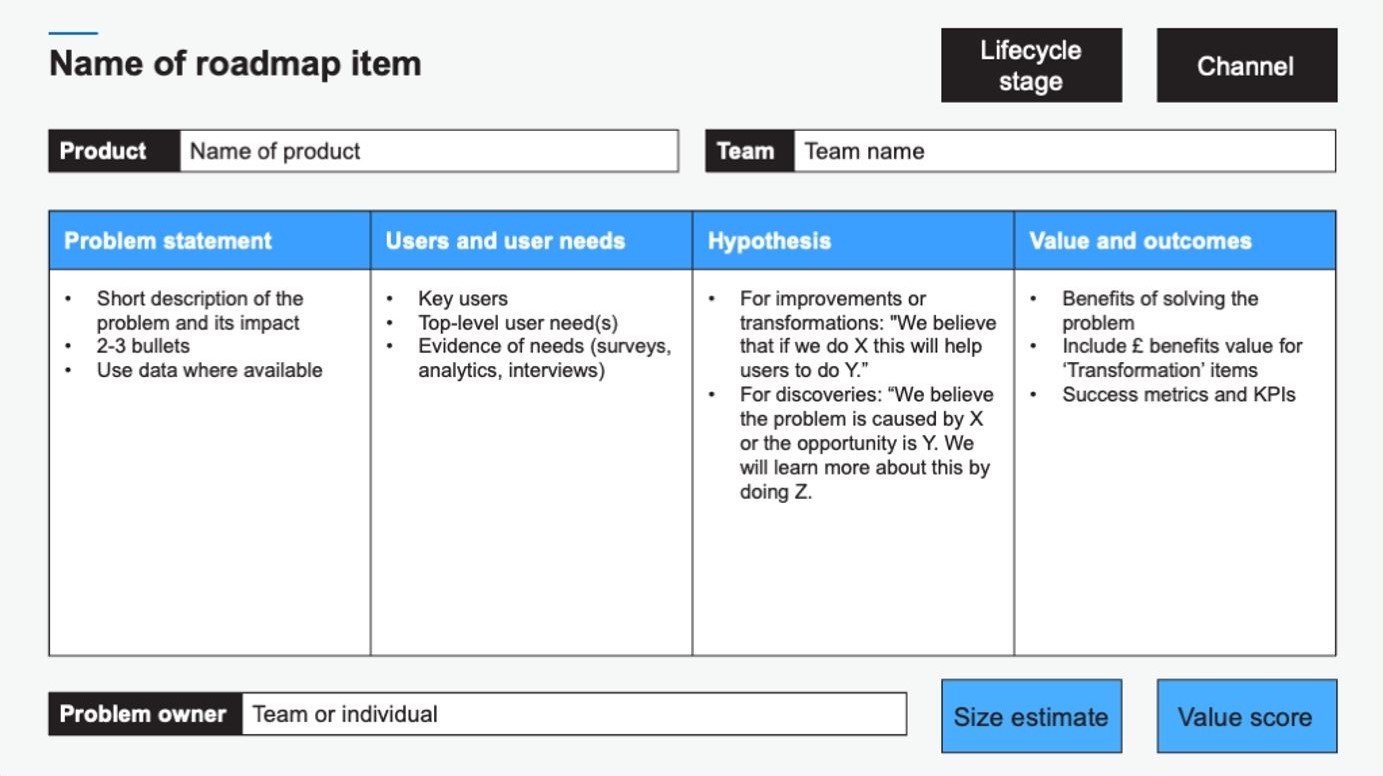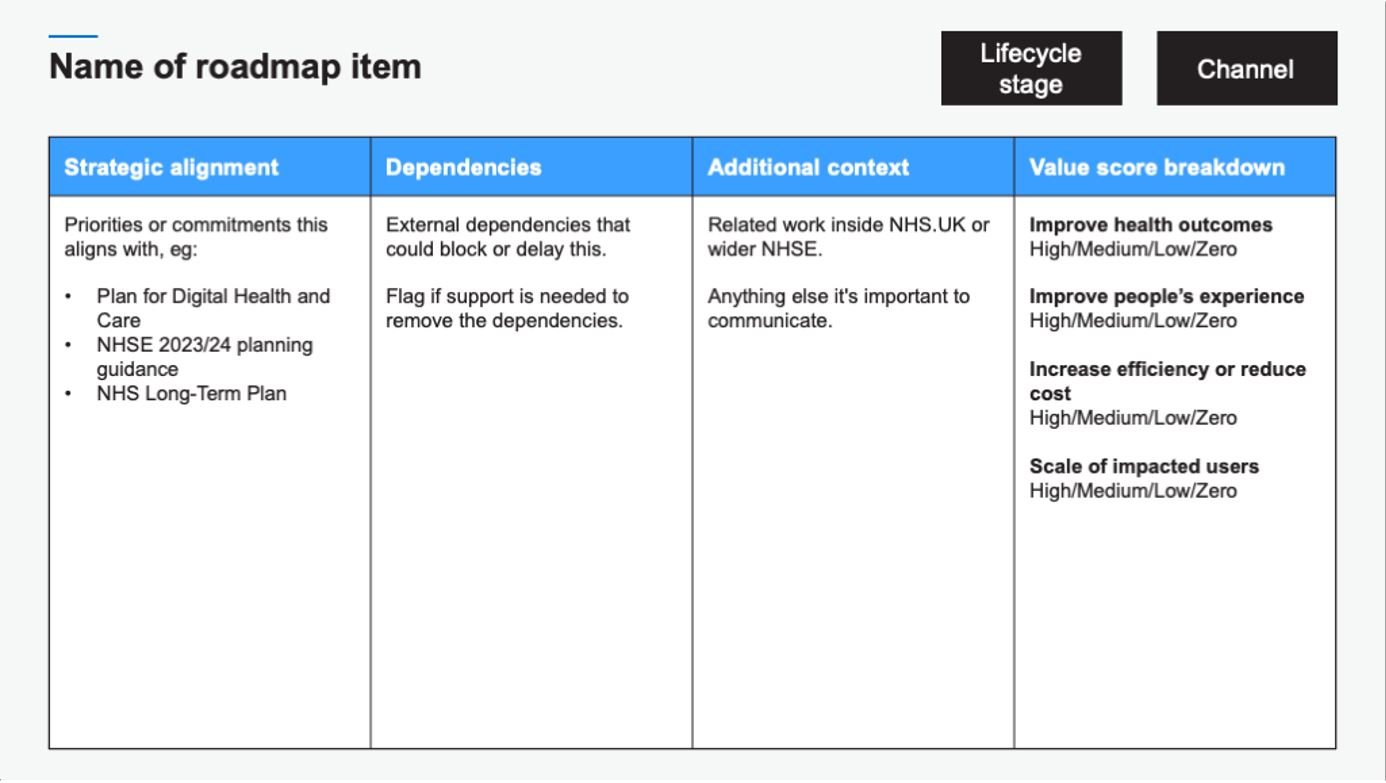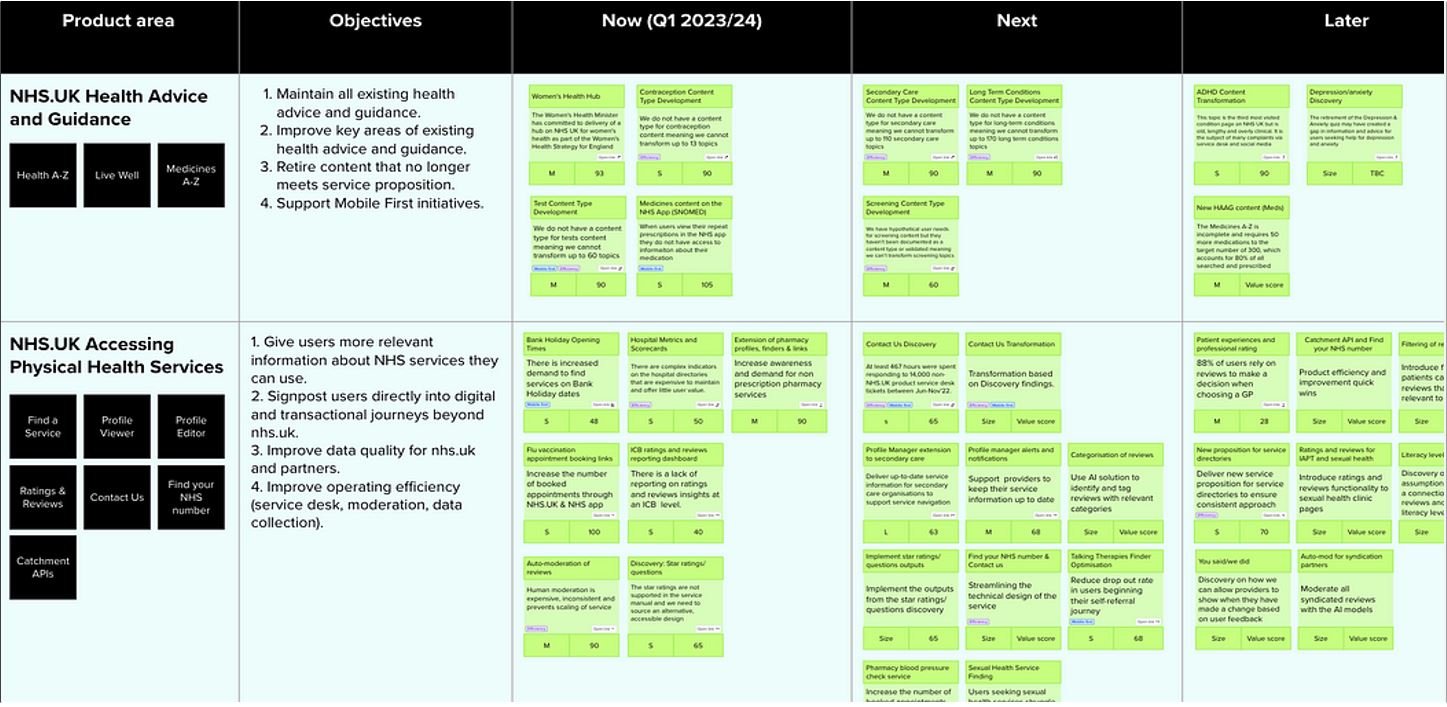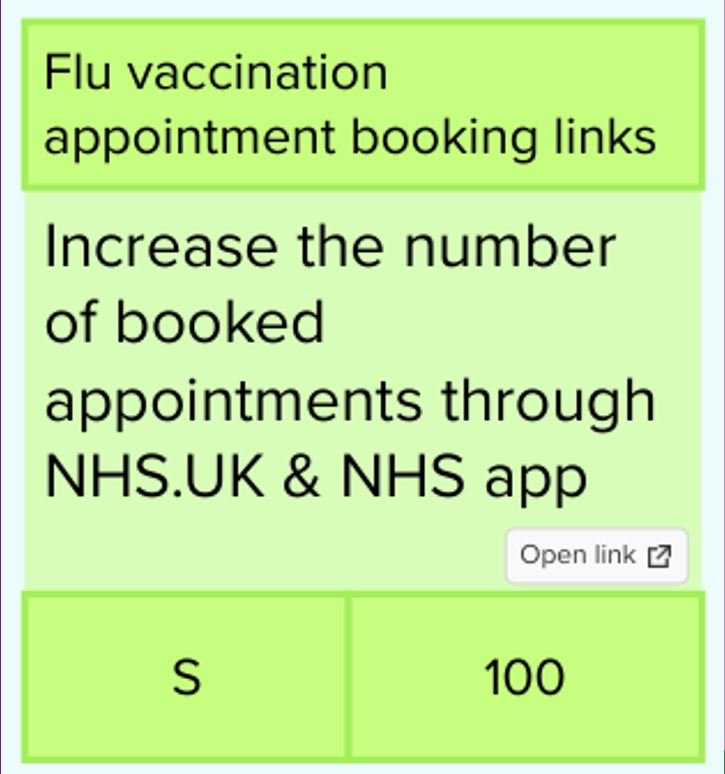We recently published an update to the roadmap for the NHS website (nhs.uk). This describes what we will (and won’t) do to meet user needs and organisational goals on the UK’s biggest health website.
Previously, the roadmap we used internally was more like a Gantt chart than a true roadmap. Each item had a start and an end date and a description of the output, not the outcome.
In March 2023, we made significant changes to how we created and presented the roadmap. This is how we did it.
Context
In the past, the ‘roadmaps’ for NHS.UK and the NHS App programmes had been created separately. This time around, we worked closely with the NHS App team and both teams used the same process, a major step forward in improving collaboration on shared goals.
20 product managers contributed to the NHS.UK and NHS App roadmaps, as well as other team members and stakeholders. The process we used might look a little weighty, but it was necessary to coordinate that many people.
Finally, we used the tools available to us, such as Mural and PowerPoint. There are no doubt better tools out there but that’s what we had available. We made no effort to integrate the roadmap with the software we use to plan and track teams’ work because our teams use a mix of Jira, Azure, DevOps and Trello.
Overall objectives
The NHS website is perhaps best described as a collection of products on a single URL rather than a single product. Each group of products has its own objectives, but we also have top-level objectives for the site as a whole. These are:
- Run and maintain our existing live service.
- Improve our existing live service.
- Make our live service more efficient.
- Support initiatives where nhs.uk is a key channel.
The process
1.
Deciding roadmap items
We started by creating a summary document for each item that might make it onto the roadmap – a ‘roadmap item canvas’. Our aim was to have a consistent format so that we could easily compare different items when prioritising them and deciding what to focus on next.
These canvases summarise:
- the problem that needs solving
- the users affected by this problem and their needs
- our hypothesis about solving the problem (“if we do X this will help users do Y”)
- the outcome we are hoping to achieve, including benefits and KPIs
- alignment with other priorities or strategies, such as A Plan for Digital Health and Care or the NHS Long Term Plan
- dependencies
- size estimate (small, medium, large, extra-large)
- value score
The value score is an attempt to put a number on how valuable we think each item is, making it easier to compare with other items. It takes into account the number of people who would benefit from solving the problem and the extent to which that solution would reduce costs, improve health outcomes and improve experiences.
2.
Deciding the format of the roadmap
Now we had a longlist of roadmap items, we needed a space where we could play around with the sequence of them and discuss the options and choices we needed to make.
On a digital whiteboard we set up a draft roadmap using the popular ‘Now/Next/Later’ format. This format reflects how we actually work. It acknowledges that plans can change. For example, the ‘Next’ column is what we currently think we are going to do next, but this could change based on findings that come out of work being done ‘Now’ or a shift in priorities.
The flexibility in this format is also particularly useful right now as our organisation is working through a complex set of mergers, a reduction in the number of permanent staff and changes in senior decision-makers.
On the whiteboard, each roadmap item is represented by a card showing its name, a short description of the problem or intended outcome, its size and value score. There’s a link from each card to its roadmap item canvas if you want to explore further and see a more detailed layer of information.
The webpage version is yet another layer of information. It’s a high-level, text-based narrative. You can’t click through to more detail about any of the items – that’s something we’ll maybe add later.
3.
Reviewing the roadmap
We used the whiteboard version of the roadmap to share our thinking and get feedback from others. We discussed it at a team level and we shared it with colleagues and stakeholders more widely.
One vital feedback loop was delivery planning – checking that the roadmap could actually be delivered by our teams, and either changing the roadmap or supporting the teams where it couldn’t. Focusing on the ‘Now’ and ‘Next’ parts, our delivery managers looked at dependencies and capacity and worked out how to mitigate any issues.
4.
Publishing and updating the roadmap
Finally, we had a version that we felt was prioritising the highest value things and that was deliverable.
At the time of writing this blog post, ‘Working on now’ roughly covers the period July to September 2023. We will come back to the roadmap about halfway through that period to review the ‘Working on next’ parts and decide if that really is what we plan to do in October to December 2023 or if we need to make changes.
What went well
Producing a roadmap in this way was quite different to how we had done things before, but it didn’t feel that big a leap because it was more in tune with our established ways of working.
In particular, the format proved very flexible. It was easy to move things from ‘Now’ to ‘Next’ (or vice versa) without feeling like you were breaking everything else.
Because there were so many people involved, we needed to be quite organised. It was also helpful therefore to have documentation. I published guidance on how to create a roadmap item canvas, and what was needed by what deadline. I tested this with people and I iterated it based on their feedback. This guidance included basic stuff like:
- how to decide if your item’s size is small, medium, large or extra-large
- how to calculate value score
- links to key NHS strategies and plans
Finally, when we published the new roadmap in March 2023 we said that we would update it quarterly. We made a good start on this promise by updating it in June 2023.
What could have gone better
We didn’t involve one particular group of people soon enough. This was a problem because they have a big say in how things get done and who is best placed to work on a particular thing. They are also a knowledgeable, experienced group and their feedback on an earlier draft of the roadmap would have been welcomed.
We also struggled to define KPIs for some of the roadmap items. This is because we are unable to track some of the outcomes we are hoping to achieve (for example, increasing take-up of non-prescription pharmacy services), so we have to rely on proxy metrics (for example, views of specific information). This can feel a bit distant from the intended goals. More work is needed in this area.
Most encouragingly, there was no pushback on this new way of producing a roadmap. Not that there should have been – it’s in line with the ‘product mindset’ that the new NHS England wants to adopt – but any change can be tricky. Our programme management colleagues have redesigned some of their tracking and reporting processes to fit in with this new way of working.
Related subjects
Share this page
Author
Latest blogs
Last edited: 2 August 2023 8:45 pm
Source: digital.nhs.uk









 Please wait...
Please wait...

Add comment